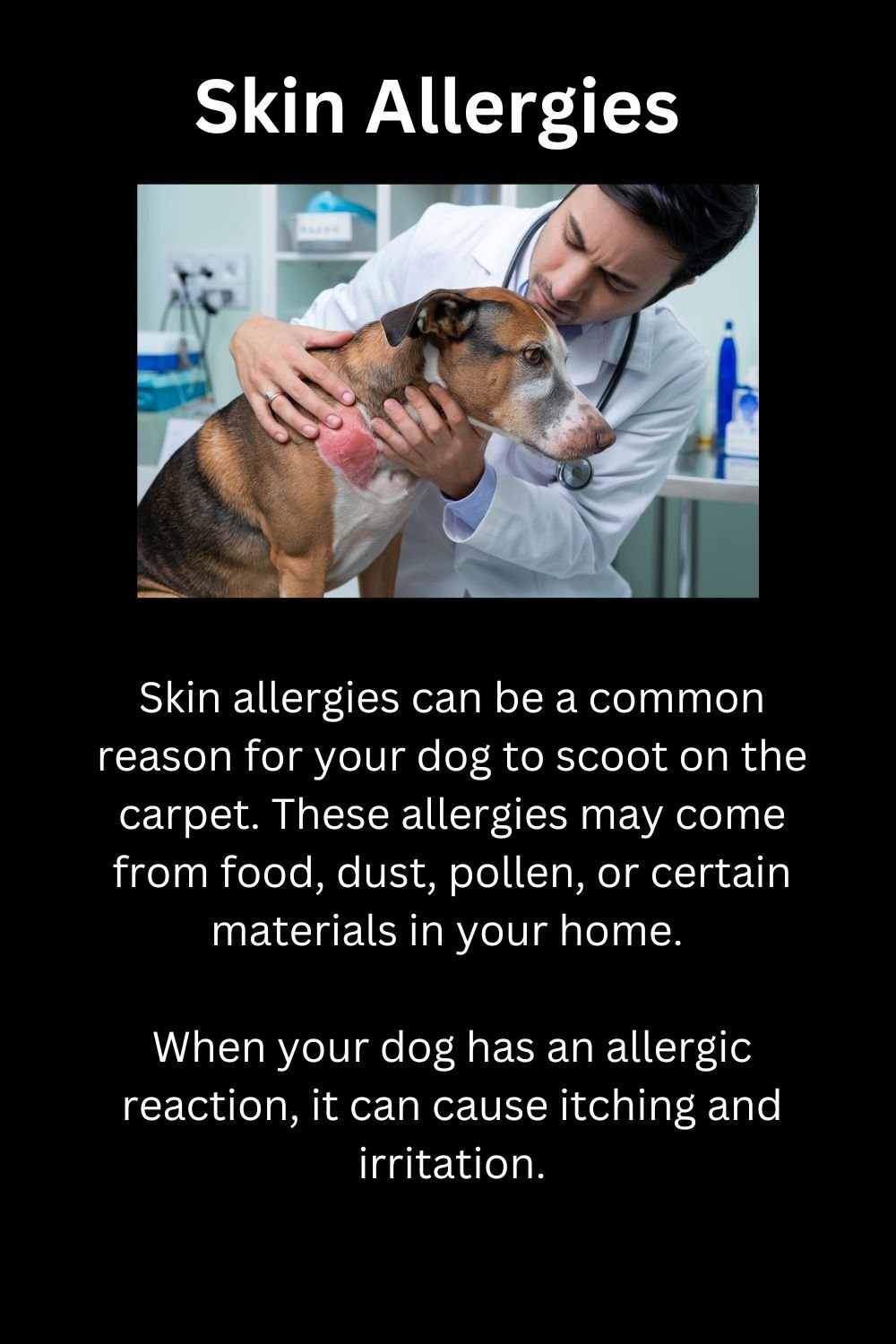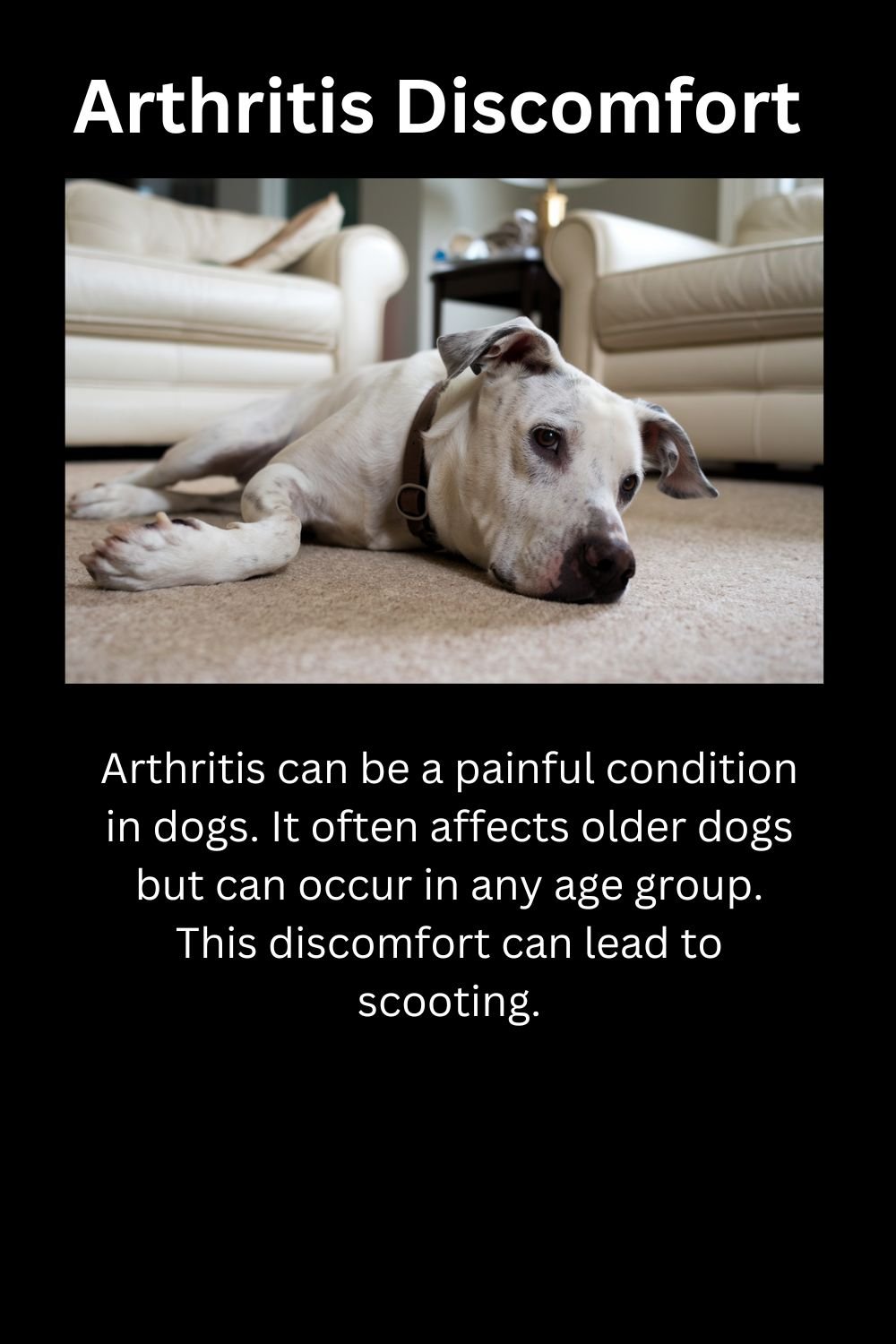Is your dog but scooting? It might be one of these 11 issues.
Scroll down to see them all and be sure to call your vet if you’re concerned.
1) Anal Gland Issues

Anal gland problems are a common reason for dogs to scoot. These glands are located on either side of the dog’s anus and store a smelly fluid. Sometimes, the fluid does not exit properly, leading to a buildup.
When this happens, your dog may feel discomfort, prompting them to drag their behind across the floor. You might notice signs like excessive licking or a fishy smell.
Regular vet checkups can help catch these problems early. A veterinarian can determine if your dog’s anal glands are full and may express them if needed. Adding fiber to your dog’s diet can also help firm their stool, allowing for natural expression during bathroom breaks.
If your dog scoots frequently or shows signs of pain, it’s essential to consult your vet. In some cases, infections or abscesses can develop, causing significant pain and requiring immediate treatment.
2) Dietary intolerance

Dietary intolerance can lead to discomfort in your dog, causing them to scoot. This often happens when they consume certain foods their body cannot properly digest.
Common signs of dietary intolerance include upset stomach, diarrhea, or even constipation. If your dog experiences soft or watery stools, it may not provide enough pressure to empty their anal glands.
When anal glands aren’t emptied properly, your dog may feel discomfort and start scooting. Food allergies can also cause similar symptoms, leading to itchy skin or irritation.
To help your dog, consider switching to a diet that is free from common allergens. Ingredients like corn, wheat, and soy are often culprits.
Consult your veterinarian for advice on an appropriate diet. They can help identify any specific food intolerances and recommend suitable options. Monitoring your dog’s reactions to their food can give you clues on what might be causing discomfort.
Making simple changes to their diet may reduce scooting behavior and improve their overall health.
3) Parasitic infection

Parasitic infections can cause your dog to scoot on the carpet. Common parasites include tapeworms and roundworms. These parasites may irritate the anal area, prompting your dog to find relief through scooting.
If your dog is scooting and you notice other signs like weight loss, an upset stomach, or changes in appetite, parasites could be the cause. Fleas can also lead to tapeworms, so keeping your dog protected from fleas is essential.
Regular vet check-ups and fecal tests can help catch these infections early. If your dog has a parasitic infection, your veterinarian will recommend treatment options.
Prompt action can prevent further discomfort for your dog. It’s important to monitor your pet’s health closely and address any unusual behaviors, like scooting.
4) Skin allergies

Skin allergies can be a common reason for your dog to scoot on the carpet. These allergies may come from food, dust, pollen, or certain materials in your home. When your dog has an allergic reaction, it can cause itching and irritation.
You might notice your dog scratching or biting at their skin often. This discomfort can lead them to scoot as a way to find relief. Food allergies are especially notable. If your dog is allergic to certain proteins or grains, it may result in skin issues.
Environmental allergies can also play a role. For example, if your dog is allergic to pollen, they might show symptoms during specific seasons. It’s important to watch for changes in your dog’s behavior.
If you suspect skin allergies, consulting a veterinarian is a good idea. They can help identify the cause and recommend treatments. This may include changing your dog’s diet or using special shampoos. Keeping your dog’s skin healthy is essential for their overall well-being.
5) Obesity

Obesity can be a serious issue for dogs. When a dog is overweight, it can lead to various health problems, including those that affect their anal glands.
If your dog is obese, their anal glands may not express properly. This can cause discomfort, leading them to scoot across the carpet to relieve irritation.
You might notice your dog scooting more often if they are not getting enough exercise. Lack of physical activity can contribute to weight gain, creating a cycle of problems.
Managing your dog’s weight through diet and exercise can help. Make sure to provide a balanced diet and regular walks or playtime.
By keeping your dog at a healthy weight, you can reduce the chances of them scooting due to obesity. Regular vet check-ups can also help monitor their weight and overall health.
6) Poor grooming habits

Your dog’s grooming habits can play a big role in scooting. If your dog is not groomed regularly, matting or dirt can build up around the anal area. This can lead to discomfort and irritation.
You should pay attention to the fur around your dog’s backside. Long or matted fur can trap moisture and debris, which may cause itching. If your dog feels uncomfortable, scooting can become a way to relieve the irritation.
In addition to regular brushing, check your dog for any signs of dirt or debris in the anal area. Keeping this area clean is important for your dog’s comfort and health.
If your dog has very long hair, consider trimming it to prevent problems. Regular grooming also helps you keep an eye out for other issues like skin infections or rashes.
If you notice persistent scooting, poor grooming might be the issue. Regular grooming can help keep your dog comfortable and reduce the chances of scooting.
7) Presence of tapeworms

If your dog is scooting, one possible reason is the presence of tapeworms. These intestinal parasites can cause irritation around the anus. This may lead your dog to scoot in an attempt to relieve discomfort.
Signs of a tapeworm infection include not only scooting but also visible segments in your dog’s feces. You might also notice small, rice-like grains around the anus or in their bedding.
Other symptoms can include weight loss or bloating. Tapeworms can easily affect dogs who have fleas, as they often spread through flea bites.
To prevent tapeworms, use a reliable flea prevention method and consult your vet. Regular check-ups can help catch any issues early. Keeping your dog healthy includes monitoring their behavior and health closely.
8) Flea Infestation

Flea infestations can cause your dog a lot of discomfort. These tiny parasites bite and feed on your pet’s blood. This can lead to itching and irritation.
When your dog feels itchy, they might scoot to find relief. The area around the tail is often a target for fleas. Scratching and biting can also occur as your dog tries to cope with the itch.
You may notice flea dirt in your dog’s fur or on your carpets. This looks like small black specks and is a sign of an infestation. Regular grooming and checking for fleas can help you spot issues early.
If you suspect fleas, it’s important to act quickly. Treating your dog with a veterinarian-approved flea medication can provide relief. Don’t forget to treat your home as well to prevent re-infestation.
9) Rectal prolapse

Rectal prolapse is a serious condition where part of the rectum slips out through the anus. This can happen in dogs for various reasons, including severe diarrhea or straining during bowel movements.
If your dog is experiencing rectal prolapse, you may notice swelling or redness around the anus. Your dog might also show signs of discomfort, such as whining or scooting.
This condition requires immediate attention from a veterinarian. They can assess your dog’s health and recommend treatment options.
Ignoring rectal prolapse can lead to more severe complications. Prompt care is essential to help your dog recover and prevent further issues. If you suspect this condition, do not hesitate to seek veterinary help.
10) Arthritis Discomfort

Arthritis can be a painful condition in dogs. It often affects older dogs but can occur in any age group. This discomfort can lead to scooting.
When dogs experience joint pain, they may find it hard to sit or lie down comfortably. Scooting might be their way of trying to relieve that pressure.
You may notice your dog struggling to get up or move around. They might also show reluctance to play or go for walks due to pain. If your pet is scooting and showing signs of discomfort, arthritis could be a potential cause.
Regular veterinary checkups can help manage arthritis. Your vet can suggest pain relief options and other treatments. Keeping your dog at a healthy weight can also lessen the strain on their joints.
Watching for signs of arthritis is essential. If you suspect your dog has this condition, addressing it early can make a significant difference in their quality of life.
11) Perianal tumors

If your dog is scooting across the carpet, one possible reason could be perianal tumors. These tumors can develop around your dog’s anal area and may cause discomfort.
You might notice other signs, such as licking the area or straining during bowel movements. Both can happen if the tumor is pressing on the rectum.
Perianal tumors can be benign or malignant. Benign tumors are more common, but some can progress to more serious forms. It’s essential to check with your veterinarian if you see any unusual growths or symptoms.
Diagnosing perianal tumors usually requires a physical exam, and tests like blood work may be needed. Your veterinarian can determine the best course of action based on the type and size of the tumor, and whether it has spread.
If a tumor is found, treatment may involve surgical removal. Early attention to signs of perianal tumors can help improve your dog’s health and comfort.